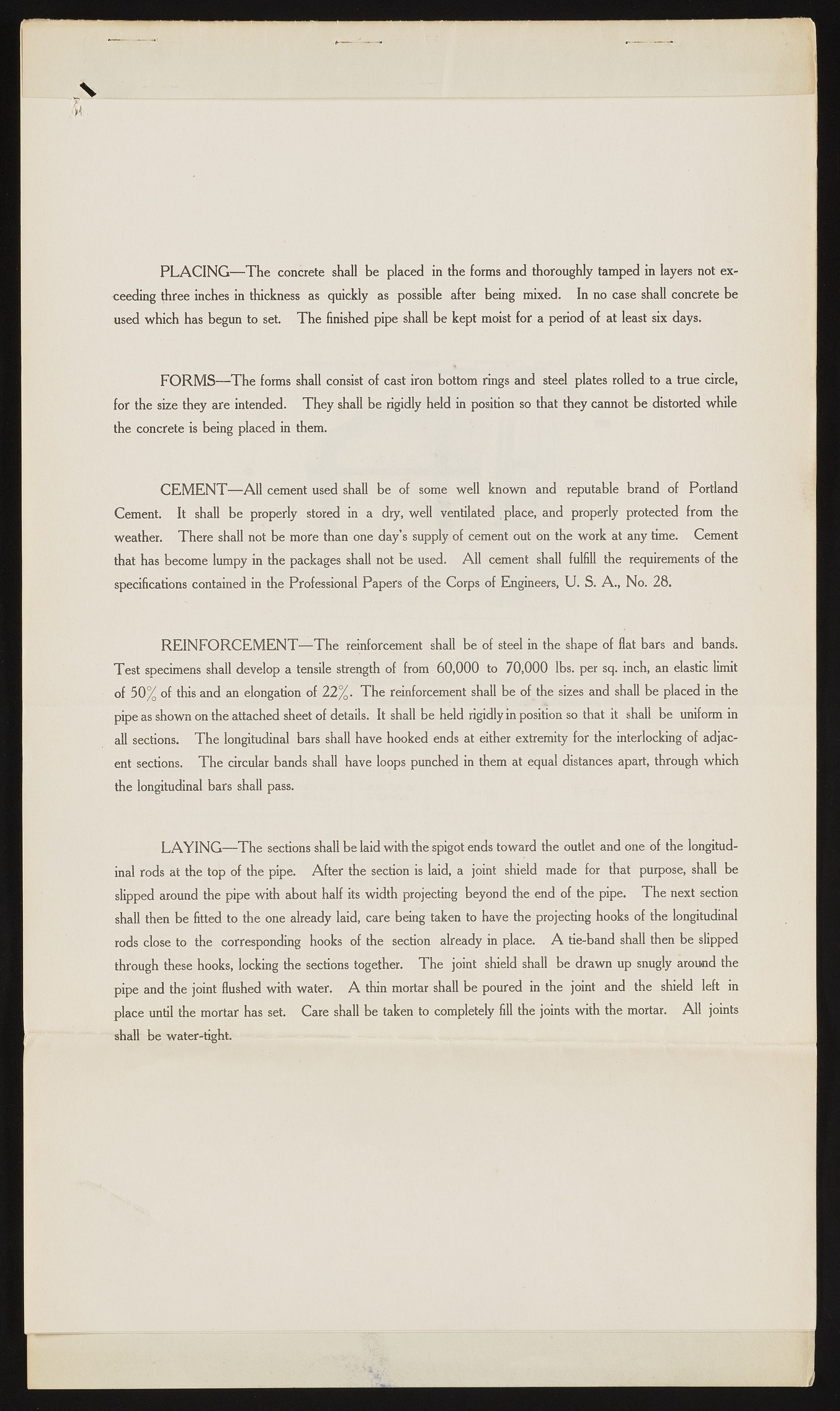Copyright & Fair-use Agreement
UNLV Special Collections provides copies of materials to facilitate private study, scholarship, or research. Material not in the public domain may be used according to fair use of copyrighted materials as defined by copyright law. Please cite us.
Please note that UNLV may not own the copyright to these materials and cannot provide permission to publish or distribute materials when UNLV is not the copyright holder. The user is solely responsible for determining the copyright status of materials and obtaining permission to use material from the copyright holder and for determining whether any permissions relating to any other rights are necessary for the intended use, and for obtaining all required permissions beyond that allowed by fair use.
Read more about our reproduction and use policy.
I agree.Information
Digital ID
Permalink
Details
Member of
More Info
Rights
Digital Provenance
Publisher
Transcription
s 5 P L A C I N G — T h e concrete shall be placed in the forms and thoroughly tamped in layers not exceeding three inches in thickness as quickly as possible after being mixed. In no case shall concrete be used which has begun to set. T h e finished pipe shall be kept moist for a period of at least six days. F O R M S — T h e forms shall consist of cast iron bottom rings and steel plates rolled to a true circle, for the size they are intended. T h ey shall be rigidly held in position so that they cannot be distorted while the concrete is being placed in them. C E M E N T — A ll cement used shall be of some well known and reputable brand of Portland Cement. It shall be properly stored in a dry, well ventilated place, and properly protected from the weather. Th ere shall not be more than one day’s supply of cement out on the work at any time. Cement that has become lumpy in the packages shall not be used. A ll cement shall fulfill the requirements of the specifications contained in the Professional Papers of the Corps of Engineers, U . S. A ., N o. 28. R E I N F O R C E M E N T — T h e reinforcement shall be of steel in the shape of flat bars and bands. Test specimens shall develop a tensile strength of from 60,000 to 70,000 lbs. per sq. inch, an elastic limit of 50% of this and an elongation of 22%. T h e reinforcement shall be of the sizes and shall be placed in the pipe as shown on the attached sheet of details. It shall be held rigidly in position so that it shall be uniform in all sections. T h e longitudinal bars shall have hooked ends at either extremity for the interlocking of adjacent sections. T h e circular bands shall have loops punched in them at equal distances apart, through which the longitudinal bars shall pass. L A Y I N G — T h e sections shall be laid with the spigot ends toward the outlet and one of the longitudinal rods at the top of the pipe. A fte r the section is laid, a joint shield made for that purpose, shall be slipped around the pipe with about half its width projecting beyond the end of the pipe. T h e next section shall then be fitted to the one already laid, care being taken to have the projecting hooks of the longitudinal rods close to the corresponding hooks of the section already in place. A tie-band shall then be slipped through these hooks, locking the sections together. T h e joint shield shall be drawn up snugly around the pipe and the joint flushed with water. A thin mortar shall be poured in the joint and the shield left in place until the mortar has set. Care shall be taken to completely fill the joints with the mortar. A ll joints shall be water-tight.

